
St. Johns, Arizona
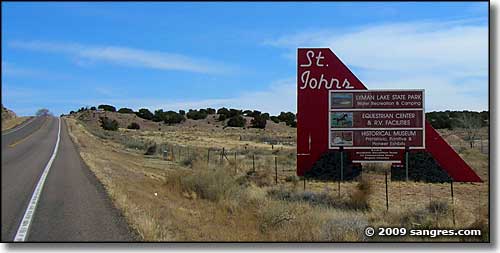
Coming into St. Johns from the west
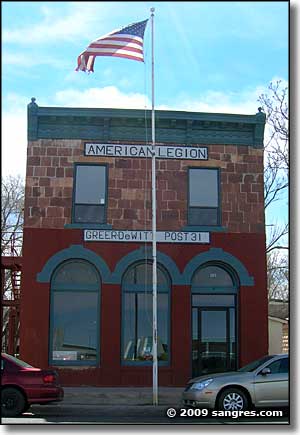
St. Johns was originally El Vadito (Little River Crossing), a thriving agricultural community back in 1873. Then an itinerant trader named Soloman Barth won enough land and cattle from the local Mexicans in a poker game that he could afford to settle down in the area with his brothers Nathan and Morris. Barth established an official townsite in 1880 and changed the name from El Vadito to San Juan. That was anglicized to Saint Johns which was officially shortened to St. Johns in 1893.
The area was occupied by the Anasazi a couple thousand years ago and those prehistoric peoples left behind ancient dwellings and trails of petroglyphs. Near St. Johns is Casa Malpais and the Rattlesnake Point Ruins. In town is the Apache County Historical Society Museum with some great displays and exhibits from pioneer days and before. St. Johns is also home to 2 large fossil-fuel-burning electric generating plants...
Near St. Johns is the famous "Placerias Quarry," a site where Samuel Welles and Charles Camp of the University of California, Berkeley, found the fossils of 40 Placerias in 1930. Placerias hesternus was a dicynodont (similar to the modern hippopotamus) that existed during the Late Triassic period, about 221-210 million years ago.
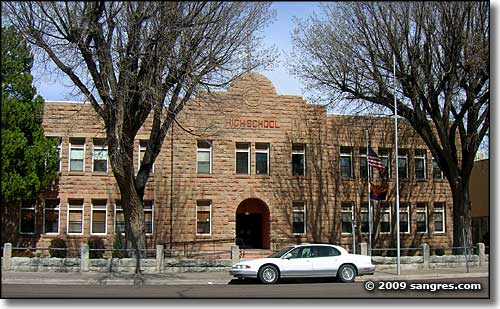
St. Johns High School
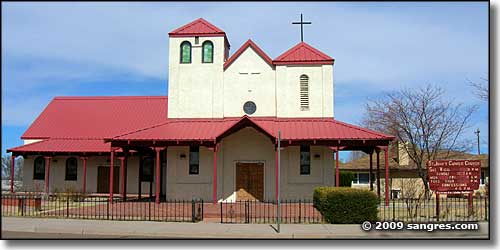
St. Johns Catholic Church
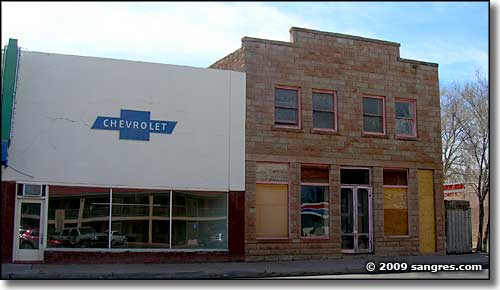
In the heart of the St. Johns business district
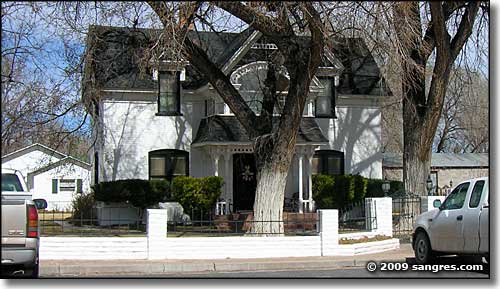
One of the original pioneer homes, across the street from the local LDS meeting house
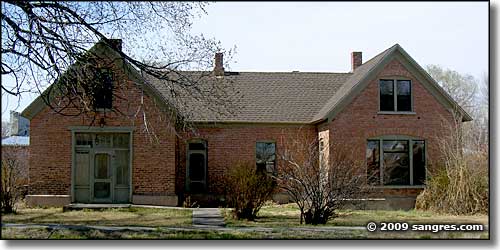
Another original settler's house being refurbed
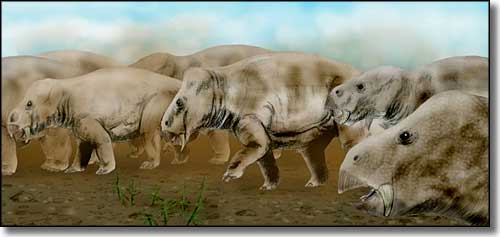
Placerias hesternus
Latitude: 34.5019°N
Longitude: 109.3715°W
Founded: 1880; Incorporated: 1946
Elevation: 5,686'
Education:
High School or Higher: 79.9%
Bachelor's Degree or Higher: 20.1%
Graduate or Professional Degree: 7.5%
2011 Cost of Living Index for St. Johns: 82.5
Estimated Median Household Income: $49,100
Estimated Median Home Value: $116,900
Median Resident Age: 30.8 Years
Major Industries:
Utilities, Government, Educational Services, Construction, Social Services, Lodging & Food Services, Professional Services, Health Care, Retail Services, Agriculture
Unemployed (March 2011): 16.5%
2010 Population Demographics
| Total Population | 3,480 |
| Males | 1,770 |
| Females | 1,710 |
| Population by Age | |
| Under 18 | 1,095 |
| 18 & over | 2,385 |
| 20-24 | 179 |
| 25-34 | 367 |
| 35-49 | 630 |
| 50-64 | 663 |
| 65 & over | 467 |
| Population by Ethnicity | |
| Hispanic or Latino | 879 |
| Non Hispanic or Latino | 2,601 |
| Population by Race | |
| White | 2,875 |
| African-American | 5 |
| Asian | 9 |
| Native American | 186 |
| Hawaiian or Pacific Islander | 1 |
| Other | 255 |
| Two or more | 149 |
